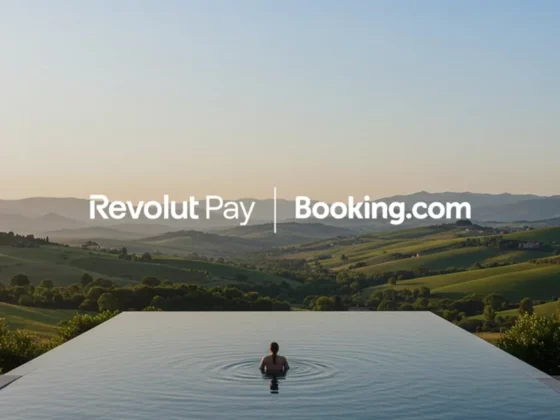
With marketing messages bombarding consumers across every channel, relevance is everything. People are increasingly immune to generic outreach.
Research shows 81% of customers prefer to engage with companies that offer a personalized experience, both in-person and across digital channels. For hotels, segmentation is the key to delivering this level of personalization.
By dividing a big audience into smaller, meaningful groups (segments) – based on booking characteristics, purchase preferences, and buying behavior – you can tailor communications that feel timely and personal, creating an instant connection with prospective guests.
The best part? You don’t need to ask for a vast amount of personal data to do it.
Emails that Succeed
Increasing relevance enhances email success; deliverability, clicks, and engagement. While improving the guest experience, it ultimately drives conversion and return on investment (ROI) – look at these customer success stories to see how it translates into results.
Guest segments enable targeted campaigns that win business. But many hotels are not segmenting at all, and marketing waste is becoming a real issue – and cost.
Unfortunately – 21% of legitimate marketing emails land in spam folders. This is often due to poor targeting and generic content. We see hotels still sending out the same content to their entire database, this actually damages your reputation as a sender.
If someone hasn’t clicked or opened an email from your hotel in the last 12 months, they’re not interested, and internet service providers (ISPs) will penalize you for this. Therefore, not segmenting gradually makes your life harder…and means your emails are more likely to land in spam folders instead of inboxes.
So Why Isn’t Segmentation Happening?
First, there’s a misconception that segmentation is more complex than hotels have the tools and data for.
Sometimes hotels just don’t know where to start with it. Some are too conventional or cautious with data. Others believe they need all-singing, all-dancing, almost lifelike personas to segment effectively, which means segmentation never really happens.
Yet – none of these reasons need to be blockages to effective segmentation. Even the most basic data helps segment and achieve a level of personalized relevance.
Get a Handle on Current Email Performance
So where do you start? Consider engagement with your emails first, as every email campaign captures engagement data. This holds essential insights to help you segment your audience. Did recipients open or click on a campaign in the last six months? This indicates their interest and engagement level. Were they recently added to the database in the last two months? They might be more receptive to your messages. Using campaign engagement filters in your email tool can be a good starting point for segmenting, and it can help you tailor your messages.
5 Ways to Turn Guest Data into Smarter Marketing
Once you’ve looked at how your recent email campaigns performed – and considered ways you can tailor your messages based on that – here are five specific ways you can use existing guest booking data to break the cycle of generic marketing.
1. Stay Date
Every hotel captures a guest’s stay dates! This data holds some vital clues to help you segment. Did guests stay midweek or at the weekend? This gives you an indication of whether they’re leisure guests or business travelers. Which seasons did guests stay? They might be convinced to stay during the same season in the future or visit during another season. Perhaps guests stayed while a big event was happening nearby?
Action: Use stay dates to develop targeted leisure/business offers, seasonal deals, and to promote stays during similar future events.
2. Country of Origin (Source Market)
Travelers from different countries have their own language, preferences, and cultural reference points. Hotels can tap into this by targeting campaigns based on where travelers originate. This data can show you preferences of customers from different countries. Regional holidays, school breaks, seasonal travel trends, and culturally-relevant experiences can all be used to create relevant campaigns. This is a simple way to strengthen your appeal to customers from certain markets – especially those that spend well.
Action: Create different email campaigns and offers for audiences in your top five source markets.
3. Rate Code
Rate codes are tied to specific offers, packages, or marketing campaigns, and help track which promotions resonate most with guests. When a guest books using a particular rate code, you gain valuable insights into which campaign influenced their decision to book – including channels and messaging that drove the conversion. Over time, patterns emerge. You might find that guests using certain codes tend to book larger rooms, choose add-ons like dining packages, or travel during specific times of year.
Action: Look at your top performing rate codes and identify the offers that best convert. Use this insight to retarget those guests with similar future promotions. You can create dedicated landing pages for each campaign or guest segment, tailored to their interests, to encourage loyalty and repeat bookings.
4. Room Type Booked
Room type data tells you which guests opted for entry-level rooms versus those who chose premium suites. It gives you an indication of their spending power, what’s important to them (or not), and enables you to target them with appropriate offers in the future (from ‘wallet friendly’ to ‘a little luxury’).
Action: Segment customers into the room types they booked. Then, send them targeted emails that either promote similar options or offer enticing upgrades, personalized based on past behavior and likely preferences.
5. How They Booked
Whether guests booked direct, through an online travel agent (OTA), via a travel agent, or another way can give you some useful insights. Not only does it show you their preferences for booking, it also highlights opportunities for converting third-party bookers into direct bookers.
Action: Start by creating an audience segment of everyone who booked via an OTA and craft a strategy to convert them. Not just once, but for the long haul. Offer benefits they can’t get elsewhere, such as loyalty perks, access to exclusive room types, or flexible booking terms. Then, reinforce that value with ongoing communications that reward them for booking direct.
Segmentation is the biggest pain point in hotel marketing. It’s an old but continually trending topic that hotels are grappling with. But by starting somewhere – with the data you have easily available – you can do something to personalize your approach and connect with customers. It really is the key to help you Find guests, convert them to Book, and Grow your revenue.
Free On-demand Webinar: Capture Online Travel Demand with Google Search
In this free webinar, you’ll explore paid search advertising for hoteliers. Learn to intercept and harness travel demand, boosting bookings and transforming online visibility into revenue.
Click here for the webinar “Capture Online Travel Demand with Google Search“.
More Tips to Grow Your Business
Revfine.com is the leading knowledge platform for the hospitality and travel industry. Professionals use our insights, strategies, and actionable tips to get inspired, optimize revenue, innovate processes, and improve customer experience.
Explore expert advice on management, marketing, revenue management, operations, software, and technology in our dedicated Hotel, Hospitality, and Travel & Tourism categories.







